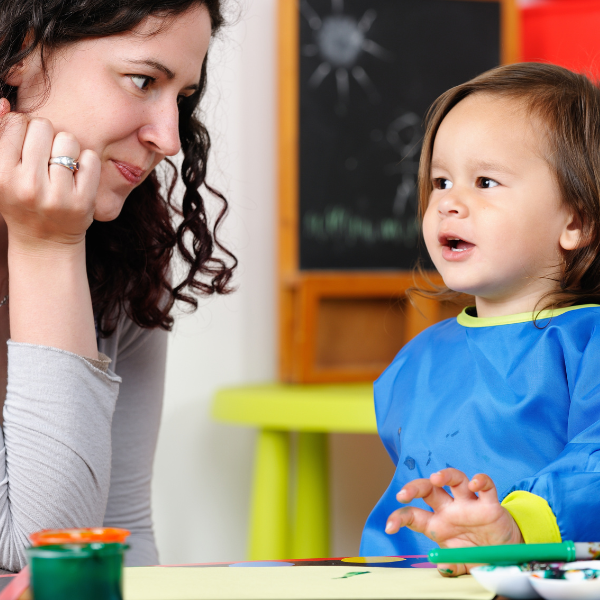Let’s face it: All children and parents struggle with communication at some point. Some kids seem to have an almost infinite capacity to express their needs, share their experiences, and respond to those around them. Their behaviors and ways of relating and communicating demonstrate that they can engage and connect. However, other children may seem unresponsive, distracted, withdrawn, inattentive, or even shutdown. So what can parents do to promote communication and help their children develop communication skills?
It is natural for many children to vacillate between greater and less responsiveness . . . There are times when it is important for them to create distance. This does not mean the distance will turn into permanent isolation. In fact, if they are allowed to process individually before returning to connect, they will be more likely to want to return. Should your child request or demand this developmentally appropriate distance, try your best not to take it personally, even when it is directed toward you. Try to give children space to be silent, consider their feelings before stating them, and find the words to describe their experiences. Much of healthy communication has to do with patience and empathy. Recognize that they are still finding their voice, and that to do so will take trial and error on their part—and patience on yours.
That said, there are some specific ways that you can show that you are here to help them express themselves and that you are curious about their experiences. A child learns, discovers, and creates through play. Play is their language, and so being able to enter their play is a way to enter their world.
Tips for Communicating with Children:
-
- Silence, Understanding, and Listening
To enter children’s play and involve yourself in their activity, allow the child to set the scene for play. Empower her to share her ideas and wishes by considering the value of silence, understanding, and listening. Observe before reacting and remain curious before offering an interpretation or suggestion. - Talk It Out. Offer a Play by Play.
To invite children to enter into your activity, share your thought process to encourage connection. You may want to even offer a “play by play” as you go about your tasks. This creates wonder in children, serves as a great tool for teaching, and allows them the opportunity to participate. When children feel “a part of” the activity, they are more likely to behave appropriately and interact with those around them. - Parallel Play
Speak to what the child is doing and what you observe. This will interest the child because it will show her, that you are interested. Kids love to know that the adults around them are curious about their play. Ask questions and then find the answer to share with your child. For example, you might say, ”I wonder what you are playing with? I see you have your doll with you. You look like you are showing your baby doll you love her by giving her a big hug. I wonder what you might do next.” Demonstrating curiosity about the child’s next action will keep her focused on her play and you involved in her experience. - Repeating
While it may at first feel a bit odd, by repeating back what the child has said, you are allowing her to feel validated and heard. It also gives her the opportunity to reflect on how her words are perceived. Kids want to keep talking when you repeat what they have said, because by repeating their words, you are showing that you are interested in what they have said and what they may say next. For example if your child says, “I see a bird,” you may respond, “You see a bird.” If the child continues by saying, “Yes, the bird is high up in the sky,” you may want to say, “The bird is high in the sky. Is that where the bird is?” - Restating
If your child misspeaks, instead of correcting her in an obvious way that may stop the conversation, repeat what she has said with the correction that fits. This is a good way to teach her by showing her what to do instead of drawing attention to the mistake. So, if she says, “I want to go to slide,” you might respond, ”You want to go on the slide?” - Open-Ended Questions
It is important that children are given chances to use critical thinking and their imagination. If we only ask children for questions that have one right answer (yes or no), they won’t think “outside of the box”. If we ask open- ended questions that don’t just have one right answer, children learn to include others in their thinking process. They also begin to understand that it is okay to not always have the answer, believe that their ideas are of value, and express themselves without fear of judgment.
- Silence, Understanding, and Listening
Regardless of the communication strategy, remember that the ultimate prize for a child is to feel connected to her caregiver, and the way to connect is to communicate daily. Engage, question, share, witness, and show that you care about your children by expressing interest in what they care about. Remember, when you show them that you can tolerate their range of thoughts and feelings, you are modeling tolerance for themselves.
Learn more about parent coaching, parenting workshops, and other services offered by the Center for Children and Youth’s Parents Place here.

